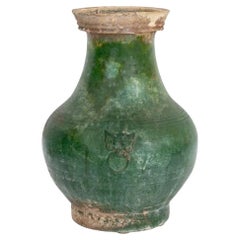Items Similar to A Rare Yue Celadon-Glazed Figural Vessel, Western Jin dynasty (265-420)
Want more images or videos?
Request additional images or videos from the seller
1 of 18
A Rare Yue Celadon-Glazed Figural Vessel, Western Jin dynasty (265-420)
$9,950
$19,90050% Off
£7,549.83
£15,099.6650% Off
€8,632.56
€17,265.1150% Off
CA$13,897.45
CA$27,794.9050% Off
A$15,452.08
A$30,904.1550% Off
CHF 8,068.22
CHF 16,136.4450% Off
MX$188,089.39
MX$376,178.7750% Off
NOK 102,946.99
NOK 205,893.9850% Off
SEK 96,456.41
SEK 192,912.8250% Off
DKK 64,426.36
DKK 128,852.7250% Off
Shipping
Retrieving quote...The 1stDibs Promise:
Authenticity Guarantee,
Money-Back Guarantee,
24-Hour Cancellation
About the Item
This vessel is well-modeled as a recumbent winged lion with detailed decorative elements. It features a grimacing face with large protruberant eyes under heavy brows and a gaping mouth, which forms a large aperture. The piece has a tail that arches to form a loop handle, and the wings are incised on the sides. The whole piece is finished with a thin olive-green glaze.
This kind of figural vessel dates back to at least the Western Han dynasty, with the design fully developed in the Yue kilns of Zhejiang province during the 3rd and 4th centuries. Such zoomorphic forms became popular among the literati and were transformed into various functional objects like wine ewers and water pots.
There is a pair, and you can check it in the uploaded list. If you would like to purchase two in pairs, please leave a message.
Period : Western Jin Dynasty (266 - 316 AD)
Type : Figural vessel
Medium : Yue celadon(Stoneware)
Provenance : The piece was acquired in Hong Kong in late 1990s.
Reference :
1) Sotheby's New York 17 March 2015 - Chinese Art Through The Eye Of Sakamoto Gorō – Ceramics Lot 33
(Price Range : 15,000 USD-20,000 USD / Type : Highly related)
2) Sotheby's London 17 May 2023 - A Journey Through China's History. The Dr Wou Kiuan Collection Online. Part I - Lot 30
(Price realised : 13,970 GBP / Type : Closely related)
3) Ethnological Museum, Berlin, Germany - Pouring vessel in animal shape, China, Yue kilns, Zhejiang province, late Western or early Eastern Jin dynasty, 4th century
4) Sotheby's London 16 May 2018 - Important Chinese Art Lot 68
(Price realised : 50,000 GBP / Type : Closely related)
5) The MET - Accession Number: 1985.207 - Vessel in the Shape of a Tiger (Huzi)
(Type : Closely related)
* Yue Celadon
Yue celadon, also known as Yue ware, is a type of Chinese pottery with a celadon glaze, originating from the eastern Han dynasty in the Zhejiang province. The name 'Yue' comes from the Yue kilns which were among the earliest to develop the celadon technique. Yue ware is known for its jade-like glaze, which can range in color from bluish-green to olive green.
Yue celadon was highly regarded during its time and was the first Chinese ware to be imported in large quantities to the Middle East and Africa, significantly influencing the development of ceramics in those regions. The production of Yue ware continued to evolve, and during the Tang dynasty, it became more refined with more complex shapes and decorations. By the time of the Song dynasty, it had greatly influenced other kiln traditions, leading to the development of the classic longquan celadon, which became one of China’s most famous ceramic products.
Yue celadon traditionally embodies elements of auspiciousness and good fortune in Chinese culture. The jade-like celadon glaze is often associated with longevity and health. Various motifs and shapes inscribed on the pottery frequently symbolize luck and prosperity. For example, lotus patterns may represent purity and immortality, while animal figures like the lion symbolizes power, courage, and strength. Lions are considered protectors that ward off evil spirits and bring forth good luck. Furthermore, Yue celadon wares were commonly used as tomb offerings in ancient China, believed to bring fortune and well-being to the deceased in the afterlife.
- Dimensions:Height: 5.12 in (13 cm)Diameter: 7.49 in (19 cm)
- Style:Chinese Export (Of the Period)
- Materials and Techniques:Celadon,Glazed
- Place of Origin:
- Period:
- Date of Manufacture:265-420
- Condition:Repaired: The handle end has been slightly repaired. Minor fading.
- Seller Location:seoul, KR
- Reference Number:1stDibs: LU9577237837642
About the Seller
4.8
Gold Seller
Premium sellers maintaining a 4.3+ rating and 24-hour response times
Established in 1999
1stDibs seller since 2023
38 sales on 1stDibs
Typical response time: <1 hour
- ShippingRetrieving quote...Shipping from: seoul, Korea South
- Return Policy
Authenticity Guarantee
In the unlikely event there’s an issue with an item’s authenticity, contact us within 1 year for a full refund. DetailsMoney-Back Guarantee
If your item is not as described, is damaged in transit, or does not arrive, contact us within 7 days for a full refund. Details24-Hour Cancellation
You have a 24-hour grace period in which to reconsider your purchase, with no questions asked.Vetted Professional Sellers
Our world-class sellers must adhere to strict standards for service and quality, maintaining the integrity of our listings.Price-Match Guarantee
If you find that a seller listed the same item for a lower price elsewhere, we’ll match it.Trusted Global Delivery
Our best-in-class carrier network provides specialized shipping options worldwide, including custom delivery.More From This Seller
View AllRare Yue Celadon-Glazed Figural Vessel, Western Jin dynasty (265-420)
Located in seoul, KR
This vessel is well-modeled as a recumbent winged lion with detailed decorative elements. It features a grimacing face with large protruberant eyes under heavy brows and a gaping mou...
Category
Antique 15th Century and Earlier Hong Kong Han Antiquities
Materials
Celadon
$7,950 Sale Price
50% Off
Rare Yue Celadon-Glazed Vessel, Jin dynasty (265-420)
Located in seoul, KR
A Yue celadon vessel from the Jin Dynasty period, notable for its characteristic greenish-glazed pottery which was prominent during this time. The vessel features a globular body wit...
Category
Antique 15th Century and Earlier Hong Kong Han Antiquities
Materials
Stoneware
$2,535 Sale Price
35% Off
Rare Yue Celadon Chicken-Head Ewer, Jin-Southern Dynasty
Located in seoul, KR
Chicken-head celadon is among the most distinct and emblematic piece from the dynamic yet innovative era spanning from the Han (206 BC - AD 220) to the Tang (618-907) dynasties. Thei...
Category
Antique 15th Century and Earlier Chinese Han Antiquities
Materials
Celadon
$3,495 Sale Price
50% Off
Rare Yue Celadon Chicken-Head Ewer, Jin-Southern Dynasty
Located in seoul, KR
Chicken-head ewers are among the most distinct and emblematic pottery pieces from the Han (206 BC - AD 220) to the Tang (618-907) dynasties. Their production commenced during the Jin...
Category
Antique 15th Century and Earlier Hong Kong Han Antiquities
Materials
Celadon, Stoneware
$7,160 Sale Price
60% Off
Rare Yue Celadon Chicken-Head Ewer, Jin-Southern Dynasty
Located in seoul, KR
Chicken-head ewers are among the most distinct and emblematic pottery pieces from the Han (206 BC ~ AD 220) to the Tang dynasties. Their production commenced during the Jin dynasty i...
Category
Antique 15th Century and Earlier Hong Kong Han Antiquities
Materials
Pottery
$6,950 Sale Price
50% Off
Carved Longquan Celadon Vase, Yuan-Ming Dynasty
Located in seoul, KR
A graceful baluster form with a flared mouth, a rounded body, and a slightly raised foot. The vase features two intricate handles in the shape of animal figures holding large looped ...
Category
Antique 15th Century and Earlier Hong Kong Ming Antiquities
Materials
Celadon
$4,900 Sale Price
30% Off
You May Also Like
Large Han Dynasty Hu Green Glazed Mythical Beasts Vessel
Located in Dallas, TX
A large and decorative Chinese green-glazed pottery hu vase.
Han dynasty (206 BC - 220 AD).
The compressed globular body encircled by eight mystical beasts of monkeys, Rabbits, de...
Category
Antique 15th Century and Earlier Chinese Han Vases
Materials
Pottery
A Han (206BC -220AD) Glazed Hu Vessel
Located in Chicago, IL
This is a fine, heavily patinated example of a Han hu wine storage vessel, buried for the afterlife. The compressed globular body narrows to a slender waisted neck, covered with a da...
Category
Antique 15th Century and Earlier Chinese Han Antiquities
Materials
Terracotta
Antique Chinese pottery green-glazed vase/[Liao Dynasty]/10th century
Located in Sammu-shi, Chiba
We are pleased to introduce a glazed ceramic vase from the Liao dynasty of China, dating from the 10th century, about 1,000 years ago.
The Liao dynasty was established by the Qidan ...
Category
Antique 15th Century and Earlier Chinese Other Vases
Materials
Pottery
Antique Chinese pottery Green-Glazed Hu Vase
Located in Greenwich, CT
Antique Chinese pottery Hu Vase or Jar , Han dynasty
The Hu form body and shoulder is encircled by various bow-string bands that enclose a pair of taotie masks and fixed-ring han...
Category
Antique 15th Century and Earlier Ceramics
Materials
Ceramic
Small Chinese Celadon Glazed Porcelain Kendi, Qing Dynasty, 18th Century, China
Located in Austin, TX
A darling small Chinese celadon glazed kendi, or pouring vessel, mid Qing Dynasty, 18th century, China, for the Southeast Asian market.
The diminutive kendi of typical form, with ...
Category
Antique 18th Century Chinese Qing Ceramics
Materials
Porcelain
Chinese Yueyao Celadon Glazed Jar 'Guan', Five Dynasties, 10th Century
Located in Austin, TX
A sublime Chinese Yueyao glazed guan jar with incised decoration and applied handles, five dynasties period (907- 979 AD), China.
The vessel of somewhat flattened globular form, w...
Category
Antique 15th Century and Earlier Chinese Tang Ceramics
Materials
Stoneware
More Ways To Browse
Rare Glazed
Pouring Vessel
Celadon Glazed
Antique China Ware
Large Celadon
Chinese Glaze Pot
Antique Water Pot
Chinese Water Vessel
Chinese Glazed Figure
Chinese Ceramics Song Dynasty
Lion And Tiger
Green Asian Vessels
Chinese Vessel Green Glaze
3 Chinese Figures
Tomb Figure
Chinese Pottery Figure
Jade Figure
Pottery Eyes
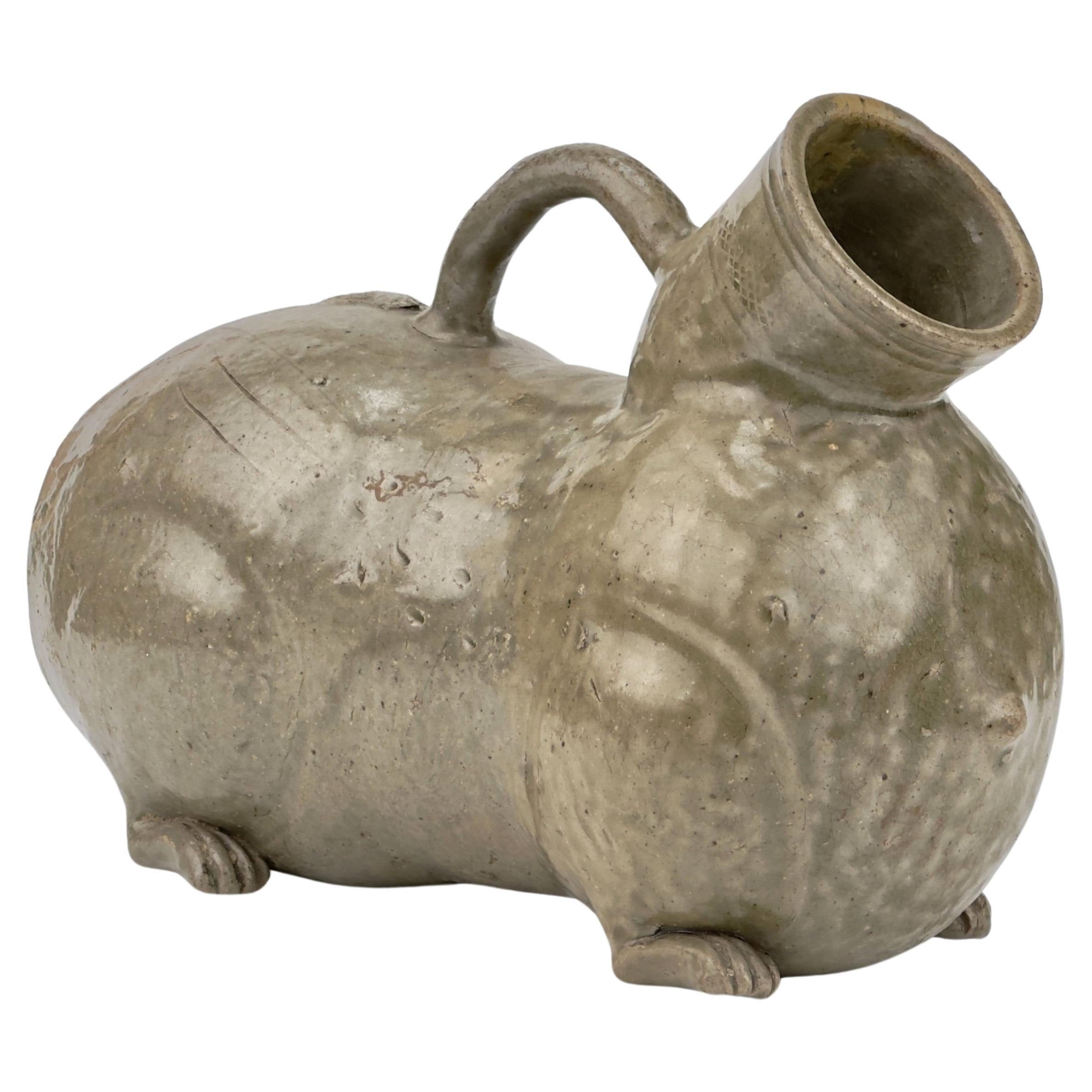
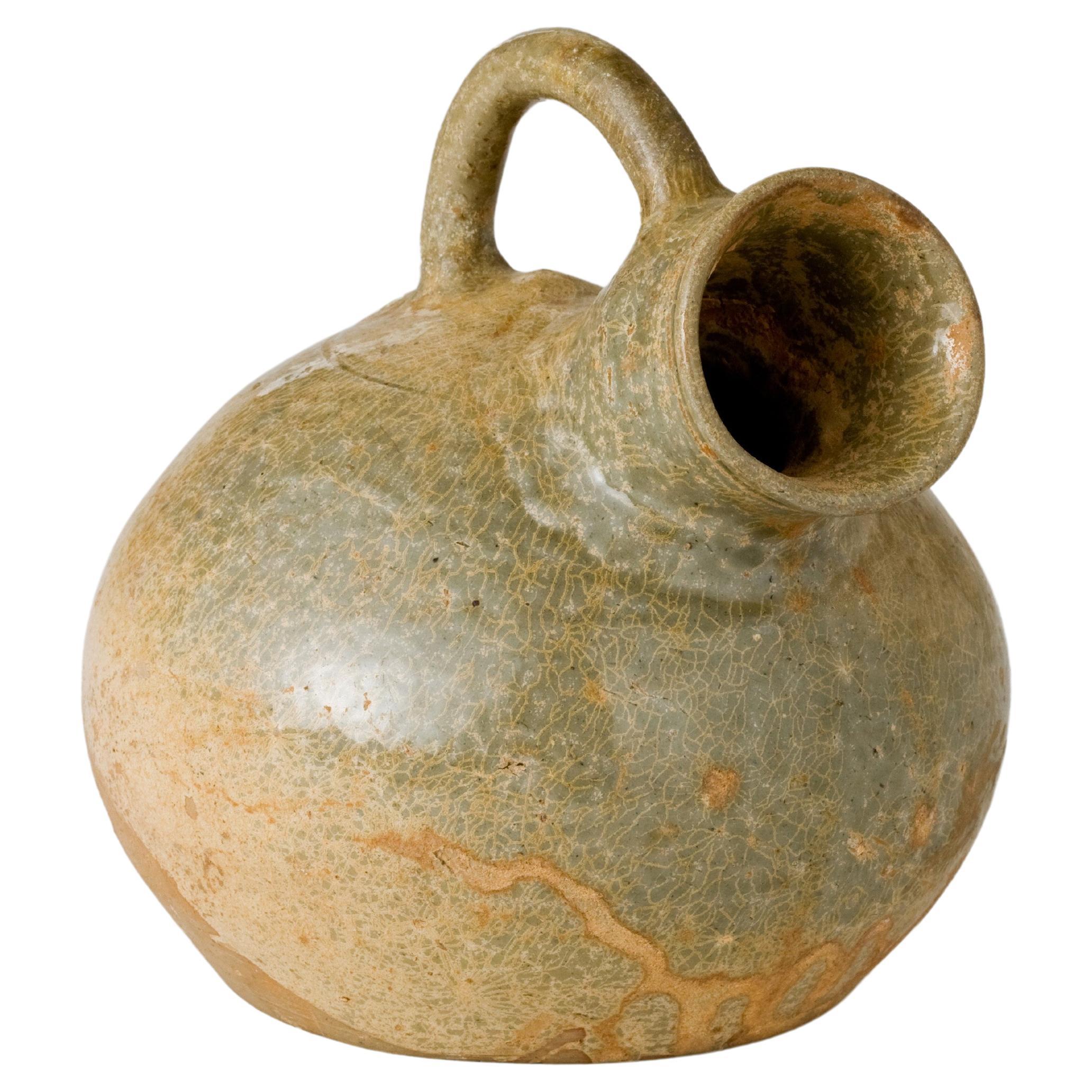
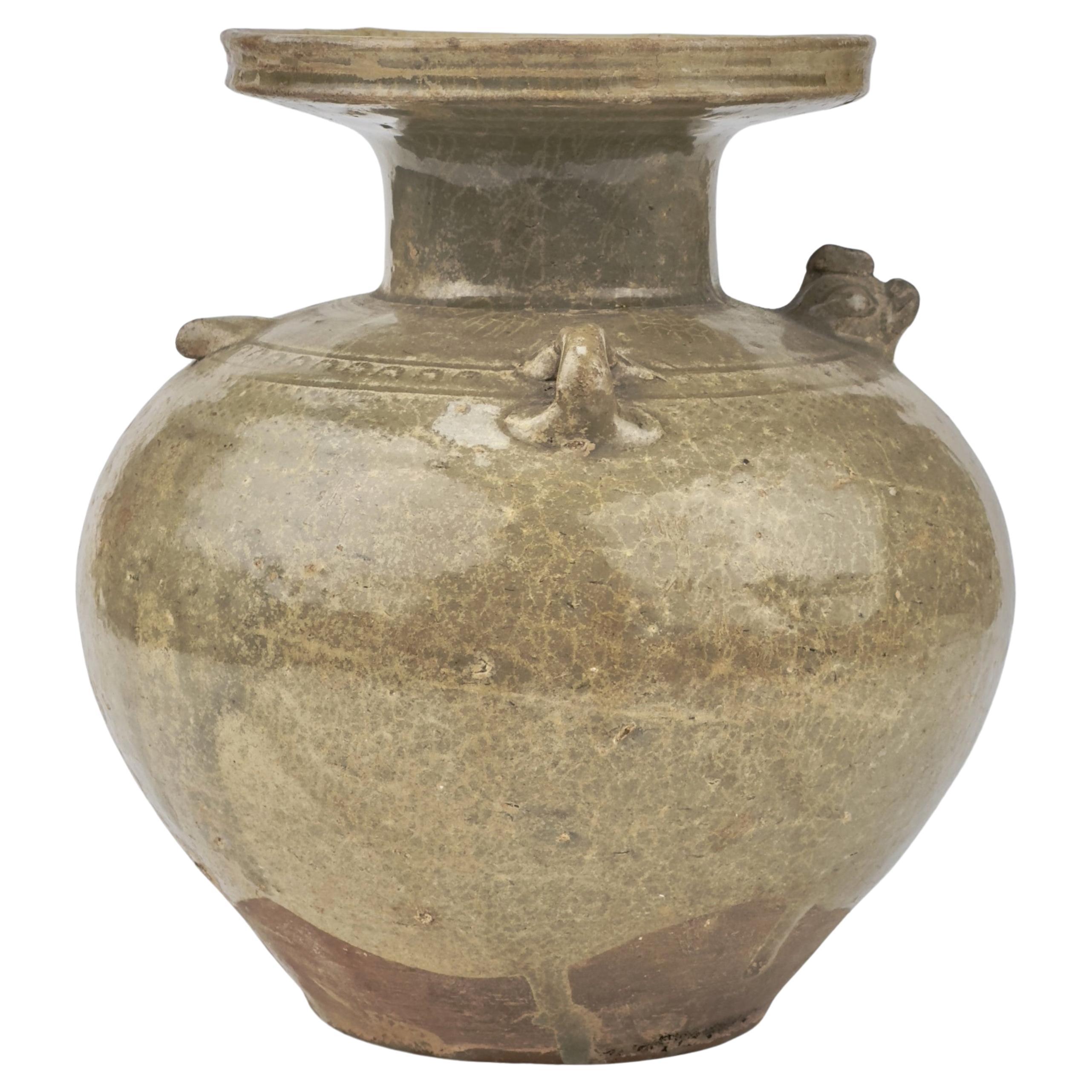
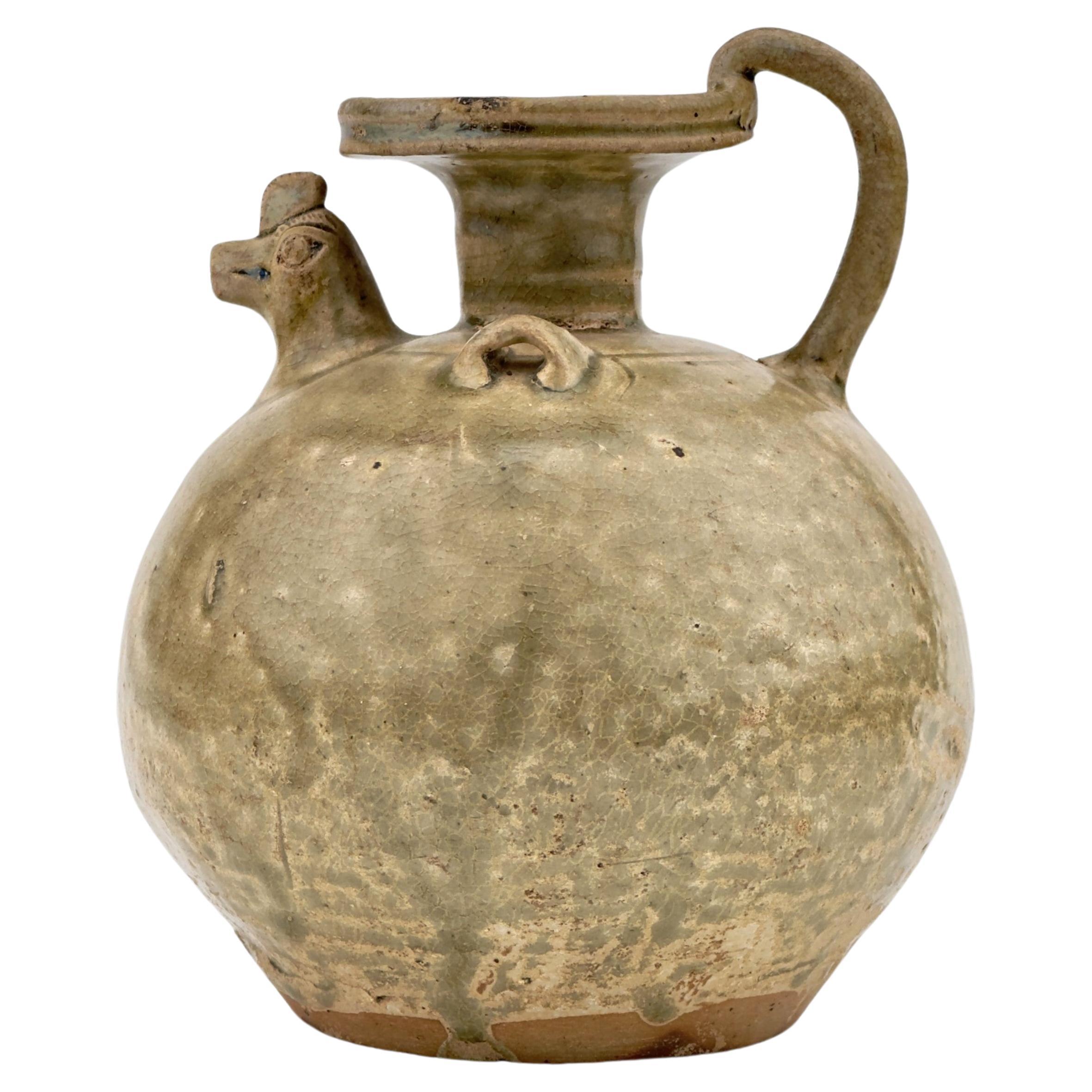
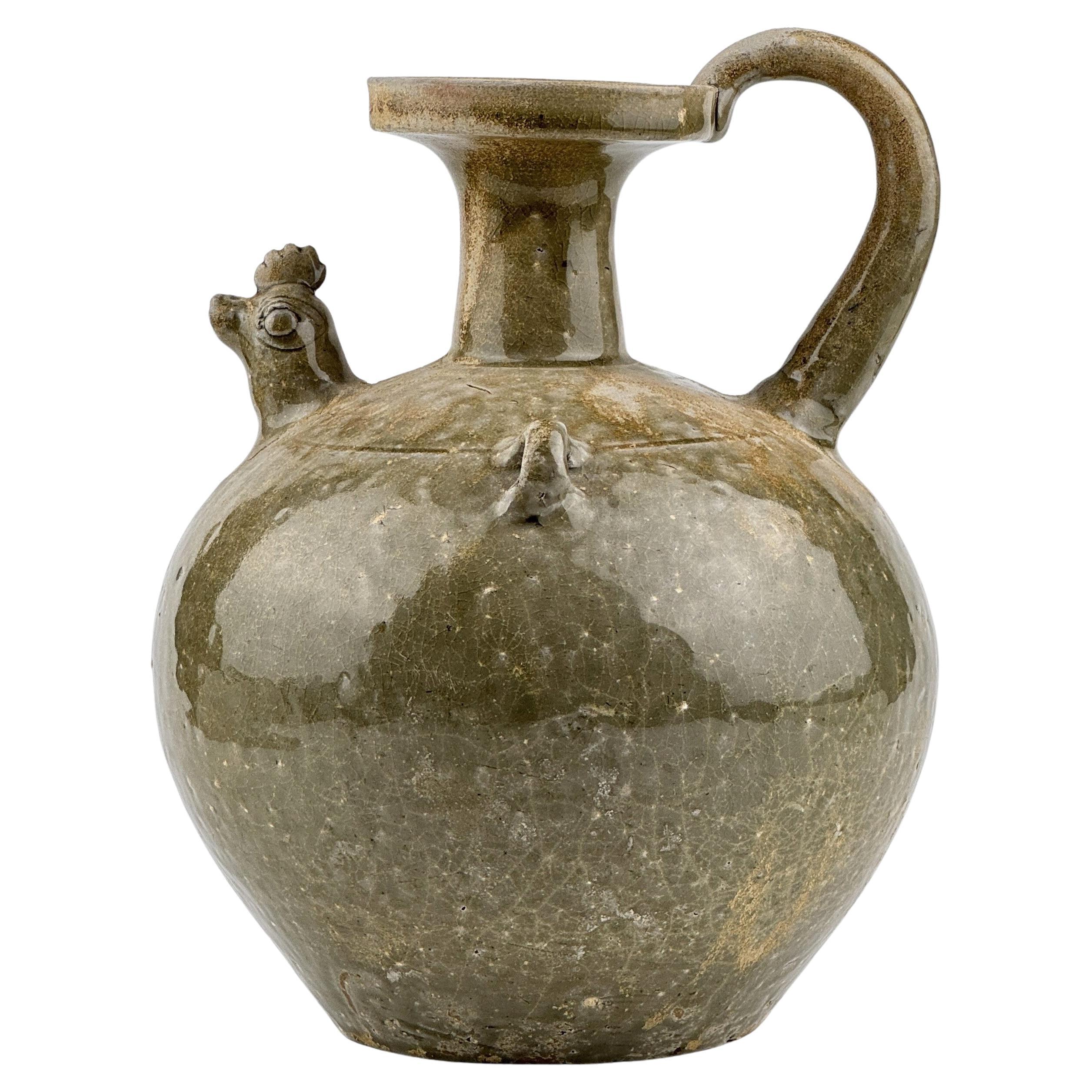
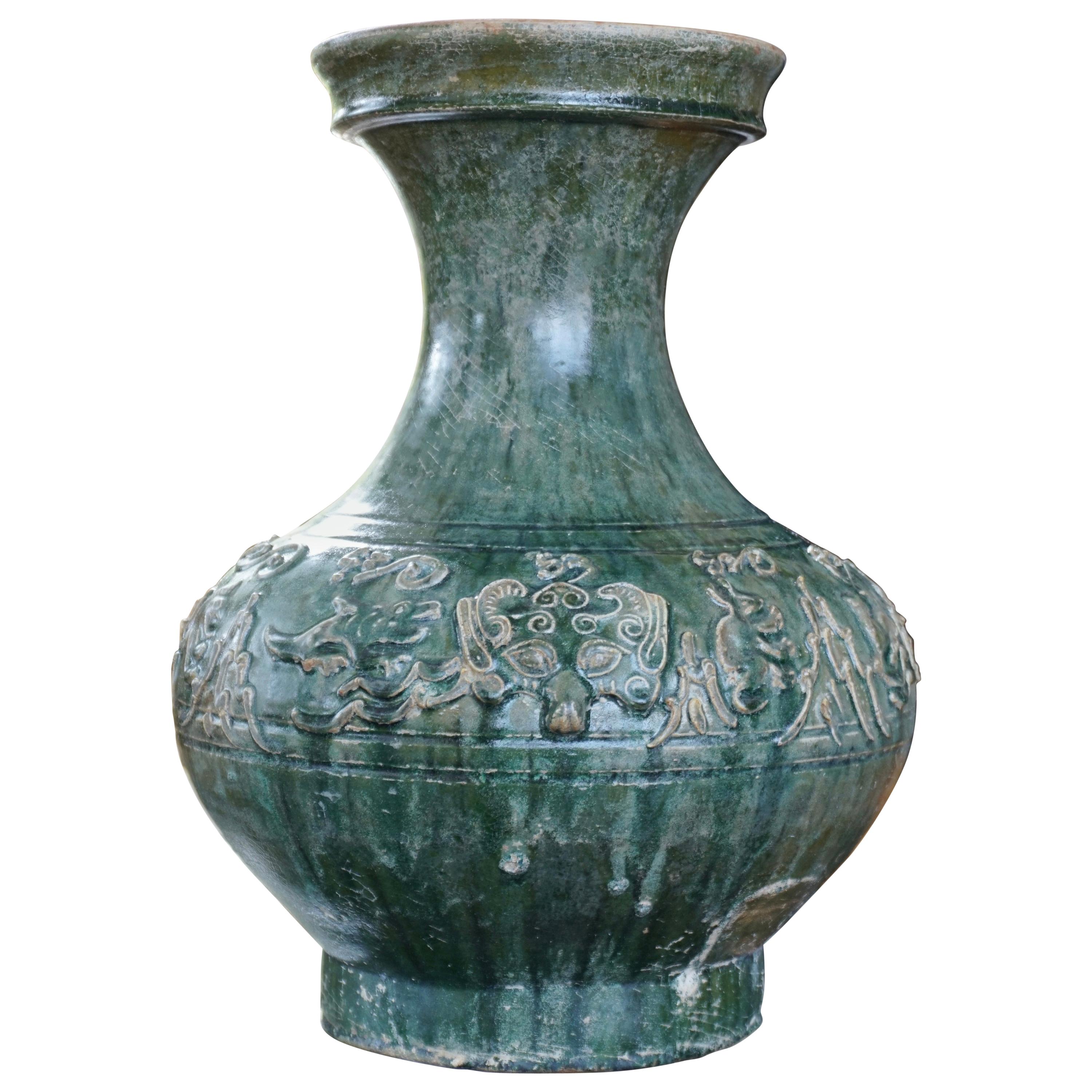
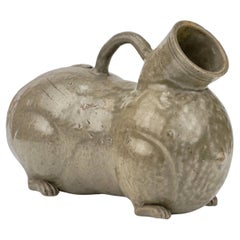
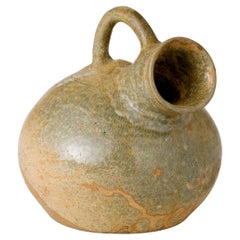
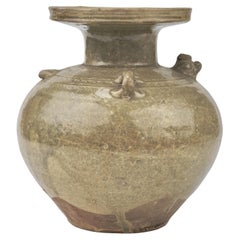
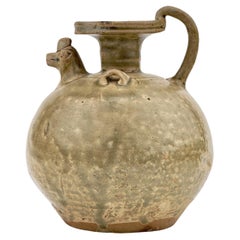
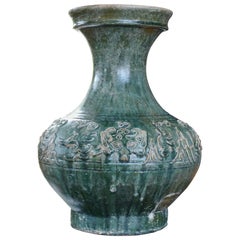
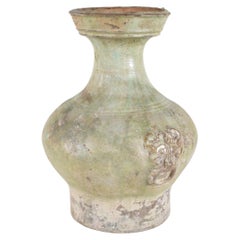
![Antique Chinese pottery green-glazed vase/[Liao Dynasty]/10th century](https://a.1stdibscdn.com/antique-chinese-pottery-green-glazed-vase-liao-dynasty-10th-century-for-sale/f_54872/f_442987721743342424199/f_44298772_1743342424463_bg_processed.jpg?width=240)
